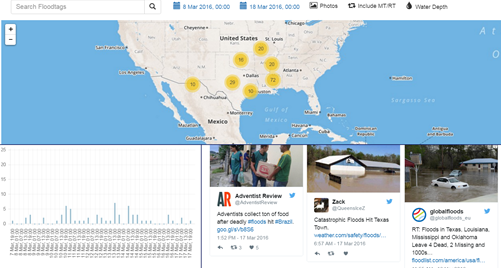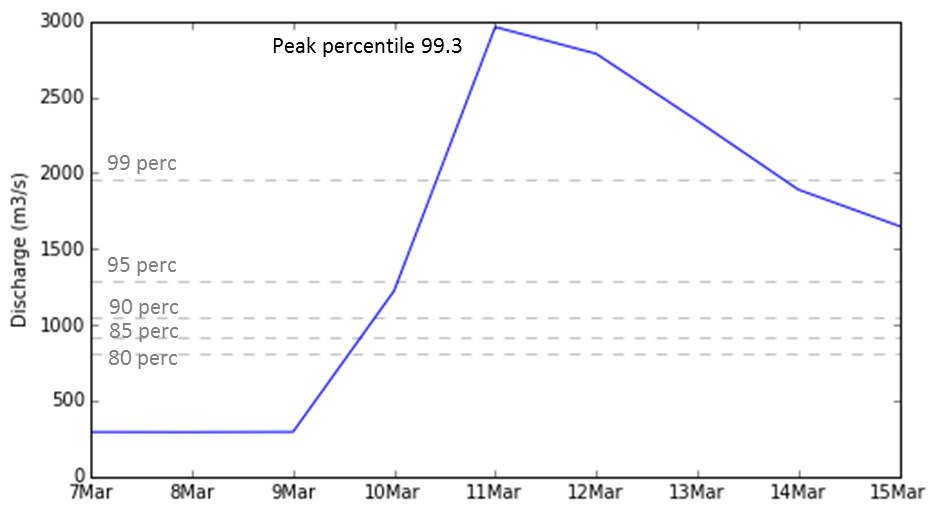...
The Global Flood Monitor (GFM) of Flootagsmaps Flootags maps the cities around the world which are being hit by a flood in real-time based on twitter messages (see Figure 1, left). The GLObal Flood Forecasting Information System (GLOFFIS) is a global hydrological forecasting system that forecasts river runoff for 1 to 14 days in advance based on external forecasts of precipitation for the entire world, with a resolution of 1 degree (see Figure 1, right). By linking both systems, we can create flood alerts based on real-time ground-truth information about flooding combined with forecasted runoff which will give a idea of how much more flooding is to come. At the same time we can learn from ground-truth flood information about the threshold in simulated runoff at which riverine flooding occurs.
...
“The top rainfall total from this multi-day heavy rain event last week was just shy of 27 inches just south-southeast of Monroe, Louisiana. The official airport reporting station in Monroe had picked up 20.66 inches of rain from March 8-11. Incredibly, in just four days, this set a record for the wettest month in Monroe, outpacing October 2009 when 20.56 inches was recorded. Including rainfall from earlier in the month and on Sunday, Monroe has seen 21.35 inches since March 1. In just six days, the cooperative station outside of Monroe (26.96 inches), picked up half the average annual precipitation of Monroe's Regional Airport (53.71 inches).” source: weather.com
Figure 2. Global Flood Explorer zoomed into the USA for March 2016
...
The city of Monroe is located in Louisiana State and the Ouachita River flows through the city. There is a GRDC station in the city called Monroe, which was automatically paired to the city as earlier explained. The flow conditions for Monroe city in the week of 8th-15th March 2016 were looked up by an automated script in the GLOFFIS system. Figure 4 presents the simulated flow at Monroe station as simulated by GLOFFIS. We can see that our global hydrological model simulate simulated quite extreme conditions, i.e. a flow that has been exceeded by only 0.7% of the historical flows.
Figure 4. Simulated flow for Ouachita river at Monroe station (GLOFFIS results)
...
After this proof of concept we will now automate the link between social media flood observations and modeled runoff. The results will be presneted presented together in a webviewer. A first mockup of how this could look like is shown in Figure 5. Recently a similar system to GLOFFIS has been developed at Deltares to forecast storm surge levels on sea called GLOSSIS. When furhter further developed, this system could be added to the GFM to provide similar flood information for coastal cities.
...



